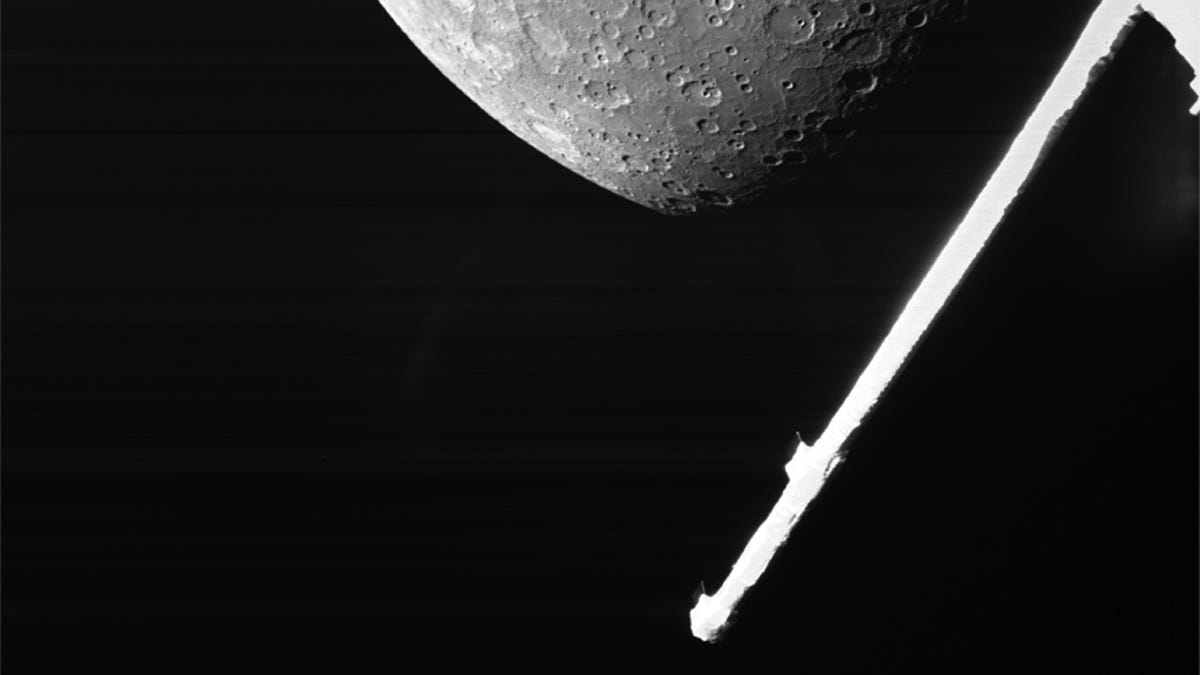BepiColombo space mission beams back its first magnificent Mercury image
The shot was taken Friday about 1,500 miles from Mercury, during the first of six scheduled flybys of the planet.

Cruising past Mercury.
If Mars has gotten too crowded for you, what with all the rovers (and helicopters) buzzing about (or collecting dust), why not take your vacation on Mercury? Or at least dream about doing it.
A new image of the planet, beamed back by the joint European Japanese BepiColombo mission, lets you fantasize about listening to some sweet tunes while strolling across Mercury's Rudaki Plains or kicking back with a good book while chilling on the rim of the Lermontov crater.
"The region shown is part of Mercury's northern hemisphere including Sihtu Planitia that has been flooded by lavas," the European Space Agency said Saturday on its site. "A round area smoother and brighter than its surroundings characterizes the plains around the Calvino crater, which are called the Rudaki Plains. The 166 km-wide Lermontov crater is also seen, which looks bright because it contains features unique to Mercury called 'hollows' where volatile elements are escaping to space. It also contains a vent where volcanic explosions have occurred."
See all the sights on the planet closest to the sun.
A joint project of the ESA and the Japanese Aerospace Exploration Agency, or JAXA, the BepiColombo mission is looking to learn more about how the closest planet to the sun formed, what it's made of and what it tells us about the birth of our solar system.
Read more: Why BepiColombo is going to explore our smallest, wrinkliest planet
It's only the third mission to set its sights on Mercury. NASA's Mariner 10 mission launched in 1973, and its Messenger mission took off in 2004.
The new shot of Mercury was taken by the ESA's Mercury Transfer Module on Friday about 1,500 miles from the planet, during the first of six scheduled flybys of Mercury. Earlier, the spacecraft had gotten within about 125 miles of the planet, according to the ESA.
The mission consists of two orbiters, the ESA's Mercury Planetary Orbiter and JAXA's Mercury Magnetospheric Orbiter, which are traveling together via the Mercury Transfer Module. The pair of orbiters are scheduled to enter orbit around Mercury in December of 2025, when they'll separate to study and map the planet in greater detail than ever before.
Previously on its long journey, the mission has sent back shots of Venus and the Earth. Oh, and of course, some selfies.
You can learn more about the BepiColombo mission in this rundown by CNET's Claire Reilly.

